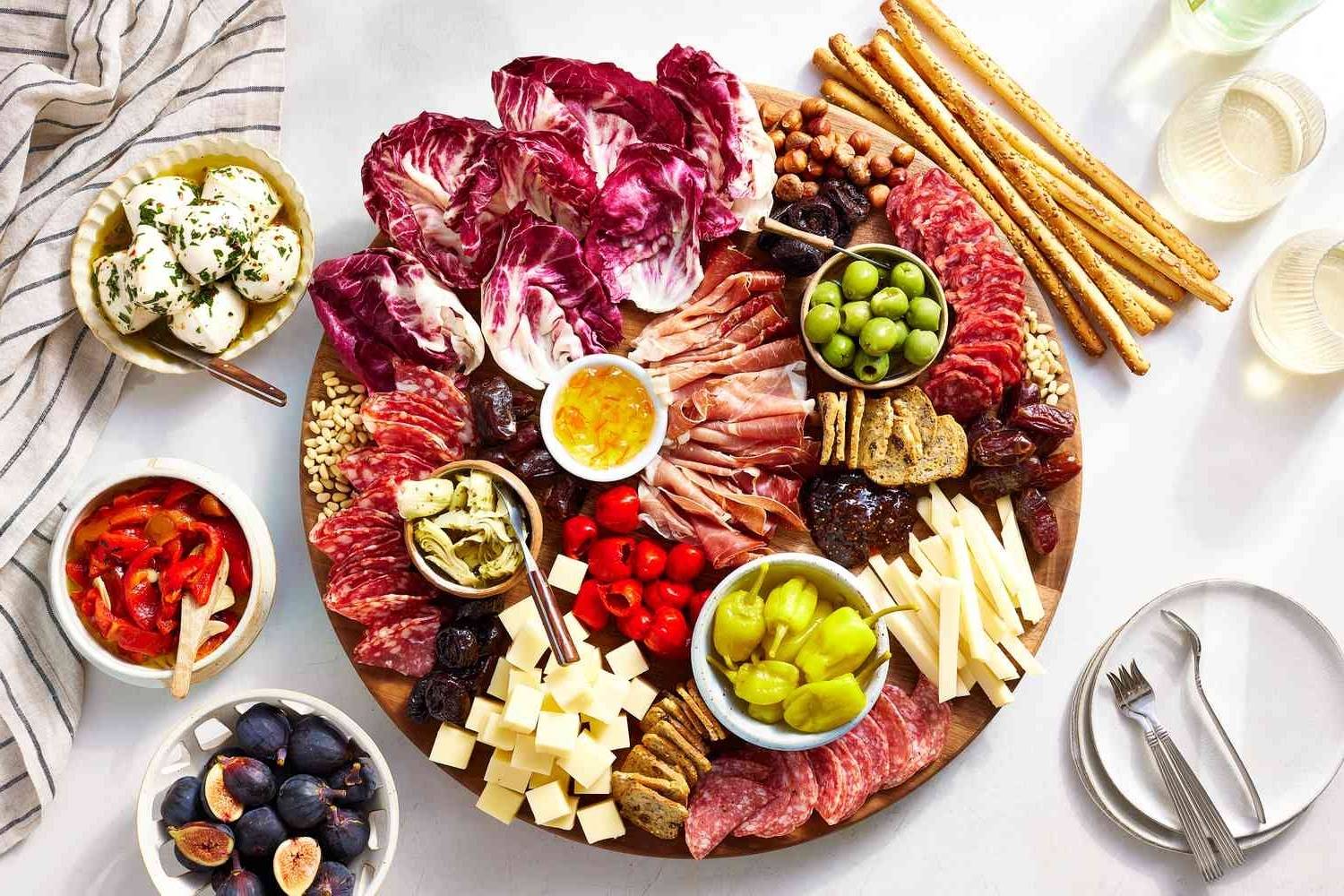
Antipasto is more than just a starter; it's a delicious journey through Italian cuisine. Ever wondered what makes this dish so special? Antipasto means "before the meal" in Italian, and it's designed to stimulate your appetite. This platter often includes a mix of cured meats, cheeses, olives, and marinated vegetables. But there's more to it than meets the eye. Did you know that the ingredients can vary greatly depending on the region of Italy? From the spicy salami of Calabria to the creamy mozzarella of Campania, each bite tells a story. Ready to learn more? Let's dive into 36 fascinating facts about antipasto!
What is Antipasto?
Antipasto is an Italian appetizer that sets the stage for a delicious meal. It typically includes a variety of cured meats, cheeses, olives, and vegetables. Let's dive into some fascinating facts about this beloved starter.
-
Antipasto means "before the meal" in Italian, highlighting its role as an appetizer.
-
Originating from Italy, antipasto has been a part of Italian cuisine for centuries.
-
Traditional ingredients often include cured meats like salami, prosciutto, and mortadella.
-
Cheeses such as mozzarella, provolone, and gorgonzola are common in antipasto platters.
-
Olives are a staple, with varieties like Kalamata, Castelvetrano, and Gaeta frequently used.
-
Marinated vegetables like artichokes, mushrooms, and roasted red peppers add flavor and texture.
-
Breadsticks or crostini often accompany antipasto, providing a crunchy contrast.
-
Regional variations exist, with different areas of Italy adding their unique twist to the dish.
Historical Significance of Antipasto
Antipasto has a rich history that reflects the cultural and culinary traditions of Italy. Here are some historical facts about this appetizer.
-
Ancient Romans enjoyed a similar dish called "gustatio" before their main meal.
-
Medieval banquets often featured antipasto as a way to stimulate the appetite.
-
Renaissance Italy saw the refinement of antipasto, with more elaborate presentations.
-
Nobility in Italy used antipasto to showcase their wealth and hospitality.
-
Trade routes influenced the ingredients used in antipasto, introducing new flavors and foods.
-
Italian immigrants brought antipasto to America, where it became popular in Italian-American cuisine.
Antipasto Around the World
While antipasto is quintessentially Italian, its influence has spread globally. Let's look at how different cultures have embraced and adapted this appetizer.
-
Spain has a similar dish called "tapas," which includes small plates of various foods.
-
France offers "hors d'oeuvres," which are appetizers served before the main course.
-
Greece features "meze," a selection of small dishes often served with drinks.
-
Middle Eastern cuisine includes "mezze," a variety of appetizers that can be hot or cold.
-
American restaurants often serve antipasto platters as part of their menu, blending Italian and local ingredients.
-
Fusion cuisine has led to creative antipasto variations, incorporating flavors from different culinary traditions.
Nutritional Aspects of Antipasto
Antipasto can be both delicious and nutritious, depending on the ingredients used. Here are some nutritional facts about this appetizer.
-
Cured meats provide protein but can be high in sodium and fat.
-
Cheeses offer calcium and protein but should be consumed in moderation due to their fat content.
-
Olives are rich in healthy fats and antioxidants.
-
Vegetables in antipasto add vitamins, minerals, and fiber to the dish.
-
Portion control is key to enjoying antipasto without overindulging in calories.
-
Homemade antipasto allows for healthier ingredient choices and customization.
Fun Facts About Antipasto
Antipasto isn't just about taste; it's also about the experience and enjoyment. Here are some fun and quirky facts about this appetizer.
-
Antipasto platters are often arranged artistically, making them visually appealing.
-
Pairing antipasto with wine enhances the flavors of both the food and the drink.
-
Seasonal ingredients can be used to create unique antipasto variations throughout the year.
-
Antipasto skewers are a fun and portable way to enjoy this appetizer at parties.
-
Leftover antipasto can be repurposed into salads, sandwiches, or pasta dishes.
-
Antipasto bars are popular at events, allowing guests to customize their plates.
-
Cooking shows and food blogs often feature antipasto recipes and ideas.
-
Antipasto competitions are held in some regions, celebrating the best and most creative platters.
-
Social media platforms like Instagram are filled with beautiful antipasto platter photos.
-
Antipasto cookbooks offer a wealth of recipes and inspiration for creating your own platters.
The Final Bite
Antipasto isn't just a starter; it's a journey through flavors and textures that set the tone for an unforgettable meal. From cured meats to marinated vegetables, each bite offers a taste of Italy's rich culinary heritage. Whether you're hosting a dinner party or enjoying a quiet evening at home, antipasto brings people together, sparking conversations and creating memories.
Remember, the beauty of antipasto lies in its versatility. Feel free to mix and match ingredients to suit your taste. Don't be afraid to experiment with different combinations. Who knows? You might stumble upon a new favorite.
So next time you're planning a meal, consider adding an antipasto platter. It's a simple yet elegant way to elevate any dining experience. Enjoy the flavors, savor the moments, and most importantly, share the joy with others. Buon appetito!
Was this page helpful?
Our commitment to delivering trustworthy and engaging content is at the heart of what we do. Each fact on our site is contributed by real users like you, bringing a wealth of diverse insights and information. To ensure the highest standards of accuracy and reliability, our dedicated editors meticulously review each submission. This process guarantees that the facts we share are not only fascinating but also credible. Trust in our commitment to quality and authenticity as you explore and learn with us.
